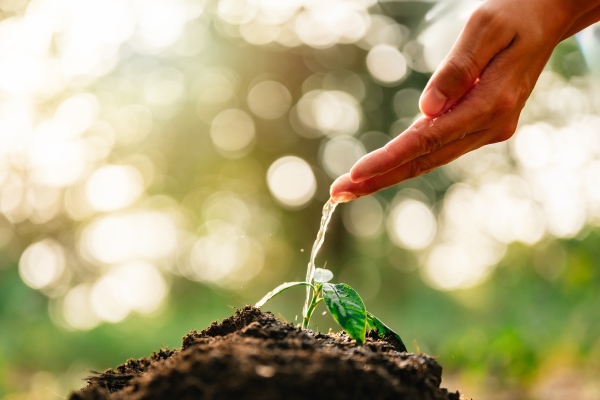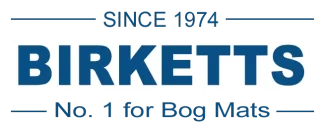The Benefits of Using Bog Mats for Ground Protection

Ground protection methods are essential for preserving the integrity of outdoor surfaces, ensuring safety, and preventing damage from human activities and harsh weather conditions. Among various options available, timber bog mats stand out as a preferred choice due to their unique advantages. These eco-friendly mats are made from natural wood, offering a sustainable alternative to traditional plastic and metal mats.
Environmental Friendliness of Bog Mats
Comparison with plastic and metal mats
In comparison to plastic and metal mats, bog mats are a much more environmentally friendly option. Plastic and metal mats are non-biodegradable, meaning they will not break down naturally in the environment, and they often contain harmful chemicals that can leach into the soil and water. The manufacturing process for these mats also involves the use of harmful chemicals, further contributing to their negative impact on the environment. Disposing of plastic and metal mats is also difficult, as they cannot be easily recycled or repurposed.
Advantages of bog mats
On the other hand, bog mats are made from a renewable resource – wood – which is biodegradable and non-toxic. The natural materials used in the construction of bog mats do not contain harmful chemicals, and they can be easily recycled and repurposed at the end of their life cycle. This makes bog mats a sustainable choice for ground protection, as they can be reused and transformed into other products, reducing waste, and minimising their impact on the environment.
Impact on soil health and water quality
The use of bog mats also has a positive impact on soil health and water quality. The spaced slats on the mat allow for improved drainage and aeration, reducing soil erosion and compaction. This promotes healthy root growth and plant development, enabling vegetation to thrive. Additionally, the natural materials used in bog mats help to maintain the natural pH balance of the soil, further promoting healthy plant growth. By choosing bog mats for ground protection, individuals and organisations can contribute to a healthier and more sustainable environment.
Improved Traction of Bog Mats

Comparison with plastic and metal mats
In comparison to plastic and metal mats, bog mats offer significantly improved traction. Plastic and metal mats have a smooth, slippery surface that can become even more hazardous when wet or covered in debris. This can lead to a high risk of slips and falls, especially for pedestrians and vehicles. In contrast, bog mats have a textured surface that provides better grip, allowing individuals to safely traverse the protected area.
Advantages of bog mats
The staggered slat design of bog mats also contributes to their improved traction. The spaced slats allow for better drainage and aeration, reducing the likelihood of standing water or ice formation. This design also increases the stability of the mat, providing a secure footing for pedestrians and vehicles. Additionally, the spacing between the slats can be customised to accommodate various terrains and applications, ensuring optimal traction in any situation.
Safety benefits for pedestrians and vehicles
The improved traction of bog mats results in numerous safety benefits for both pedestrians and vehicles. The reduced risk of slips and falls helps prevent injuries and accidents, while improved accessibility for people with disabilities ensures that everyone can safely navigate the protected area. For heavy machinery and equipment, bog mats provide a stable surface that reduces the risk of damage or malfunction. Overall, bog mats offer a safe and reliable solution for ground protection in a variety of settings.
Ease of Installation and Removal of Bog Mats

Comparison with plastic and metal mats
Unlike plastic and metal mats, bog mats are designed for easy installation and removal. Plastic and metal mats can be heavy and cumbersome, requiring specialised tools and equipment for installation and removal. This can be time-consuming and costly, and may require additional manpower and resources. In contrast, bog mats are lightweight and portable, making them simple to install and remove without the need for specialised equipment.
Advantages of bog mats
The lightweight and portable design of bog mats allows for minimal labour requirements during installation and removal. They can be easily carried and placed into position, and their simple design makes it easy to connect and secure them in place. This streamlined process saves time and money, and reduces the amount of manual labour needed. Additionally, bog mats can be easily relocated and reused, making them a versatile and sustainable option for ground protection.
Flexibility in layout and configuration
Bog mats offer unparalleled flexibility in terms of layout and configuration. They can be arranged in a variety of patterns and designs to suit specific needs and applications. Whether it’s a straightforward pathway or a complex pattern, bog mats can be adapted to fit the space and requirement. They can also be easily reconfigured or relocated as needed, allowing for maximum versatility and efficiency. This flexibility makes bog mats an ideal choice for events, construction sites, and other dynamic environments where adaptability is key.
To summarise, bog mats offer a superior alternative to traditional plastic and metal mats for ground protection. Environmentally friendly, sustainable, and safe, bog mats provide improved traction, ease of installation and removal, and flexibility in layout and configuration. Made from natural wood, bog mats are biodegradable and non-toxic, reducing waste and minimising their impact on the environment. By choosing bog mats, individuals and organisations can promote a healthier and more sustainable environment, while ensuring the safety and accessibility of their outdoor spaces. With their numerous benefits and versatility, bog mats are the smart choice for ground protection in various settings, from residential gardens to large-scale construction projects.





